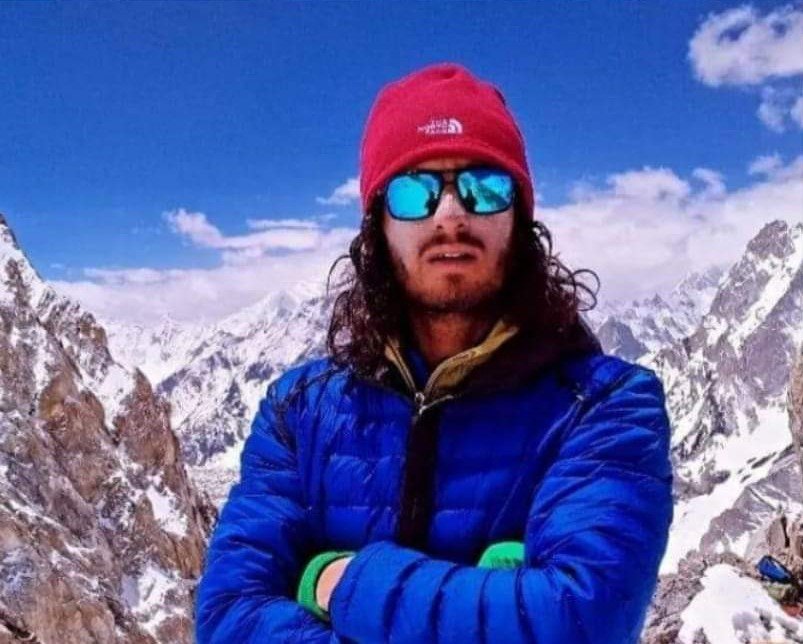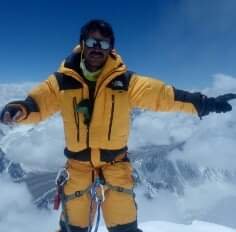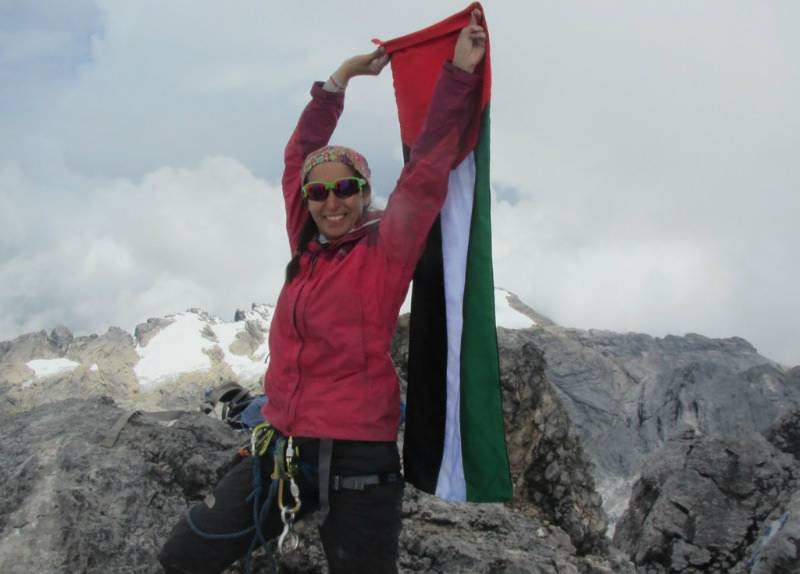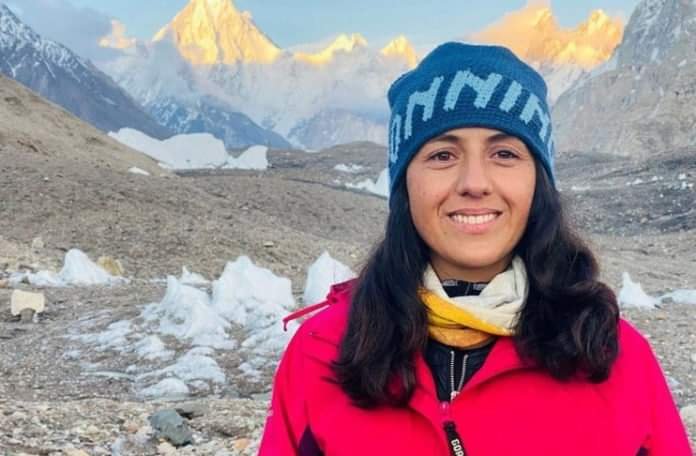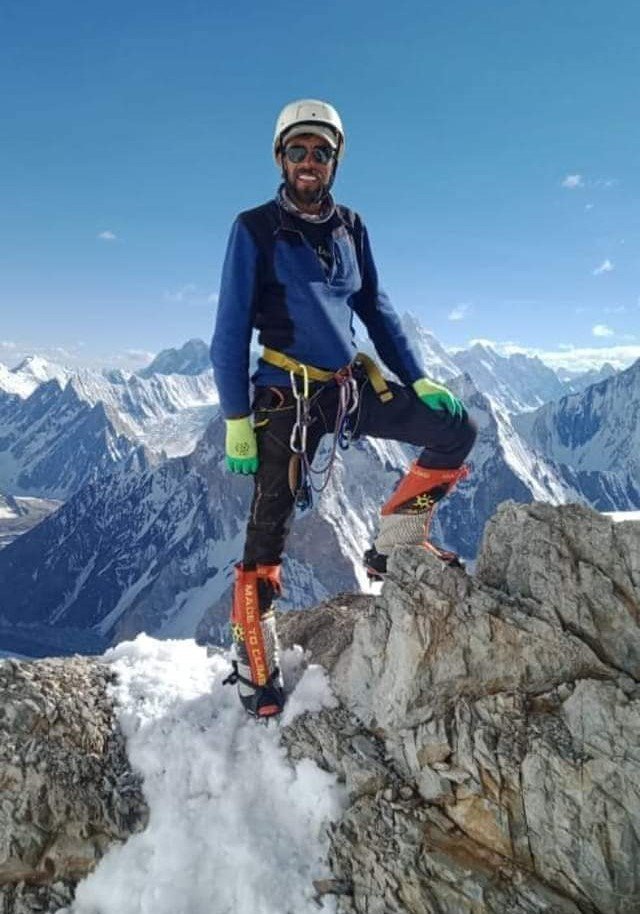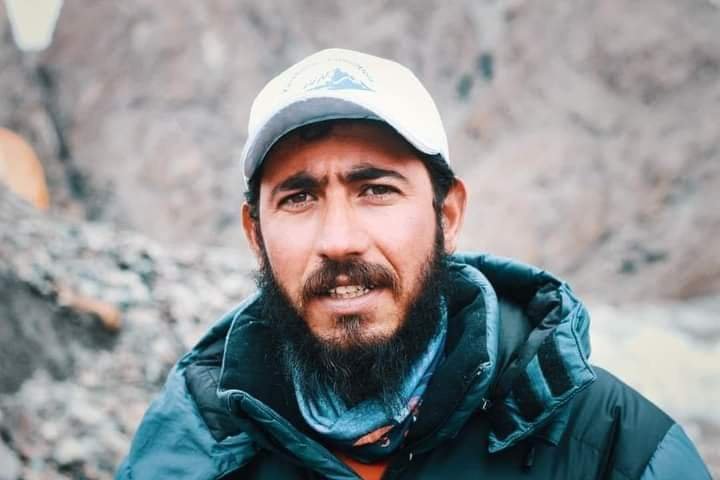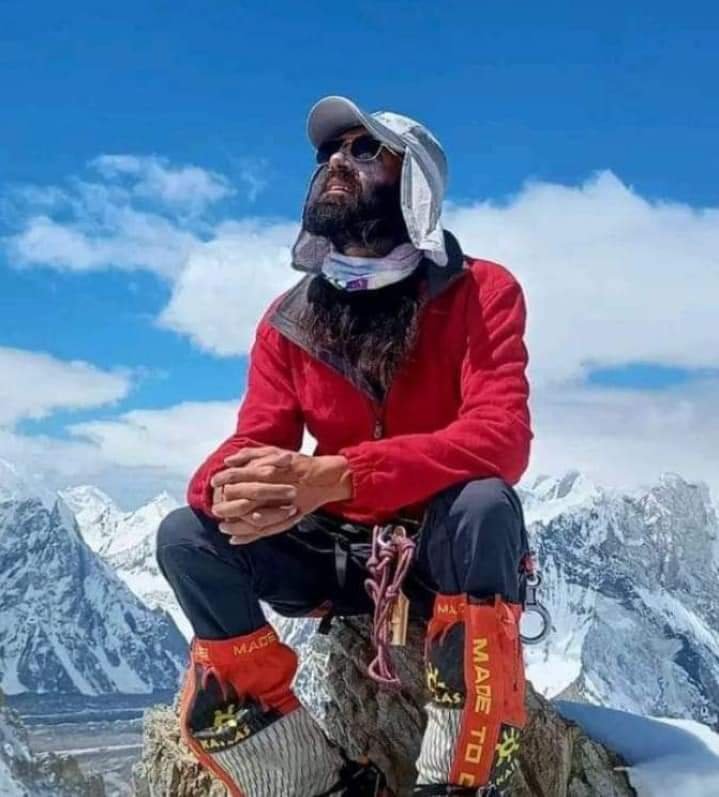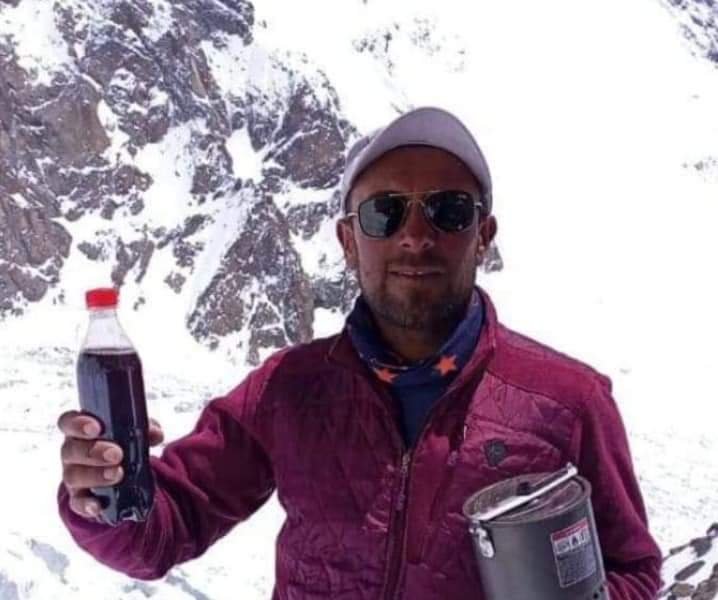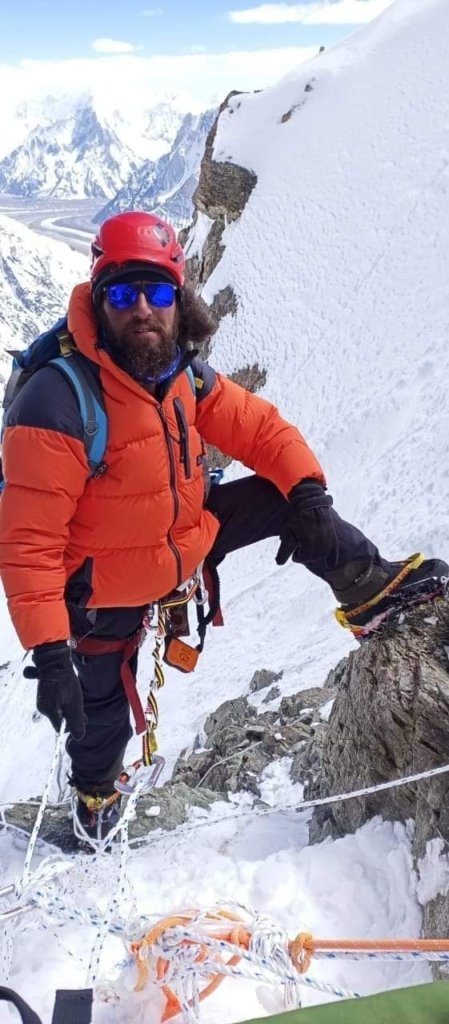by Ali Rehmat
Three women among 33 multinational expedition members have successfully scaled Nanga Parbat in the Himalayan range in Gilgit-Baltistan, many of them without oxygen supplements.
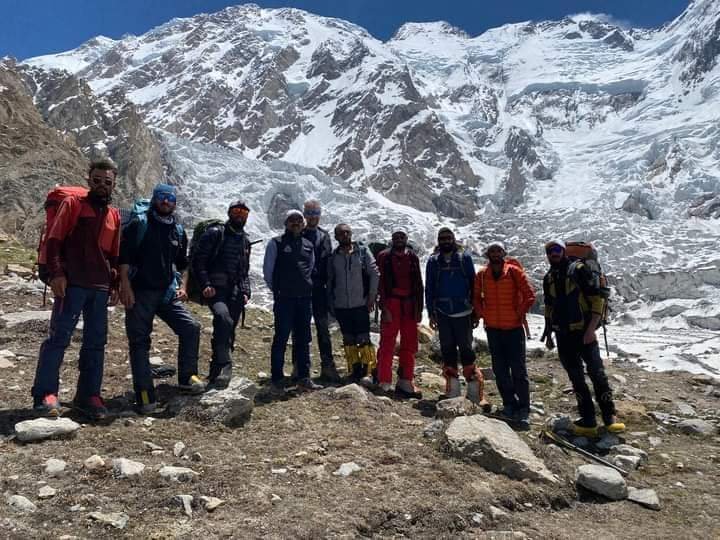
The nine-member Karakorum Expeditions team, led by Samina Baig made it to the summit of the 8,126m (26,660 feet) peak on Sunday.
Samina Baig and Rizwan Dad reached the top of the ninth highest peak in the world at 11:08am, followed by Saeed Karim, Liaqat Karim, Eed Muhammad, Ahmed Baig, and Waqar Ali who made it to the top at 11:40am without oxygen supplement.
Samina Baig is the first Pakistani woman to conquer Mt. Everest and Mt. K2, as well as all the highest peaks on seven continents.
Twenty-three members of three other expedition teams and an independent climber also reached the summit at around 1:30pm.
The summits started a little past 10am Pakistan standard time and the last confirmed was that of the Hungarian “independent” mountaineer Csaba Varga, reported Alpinismo y Montaña – Carlos Garranzo on his Facebook page.
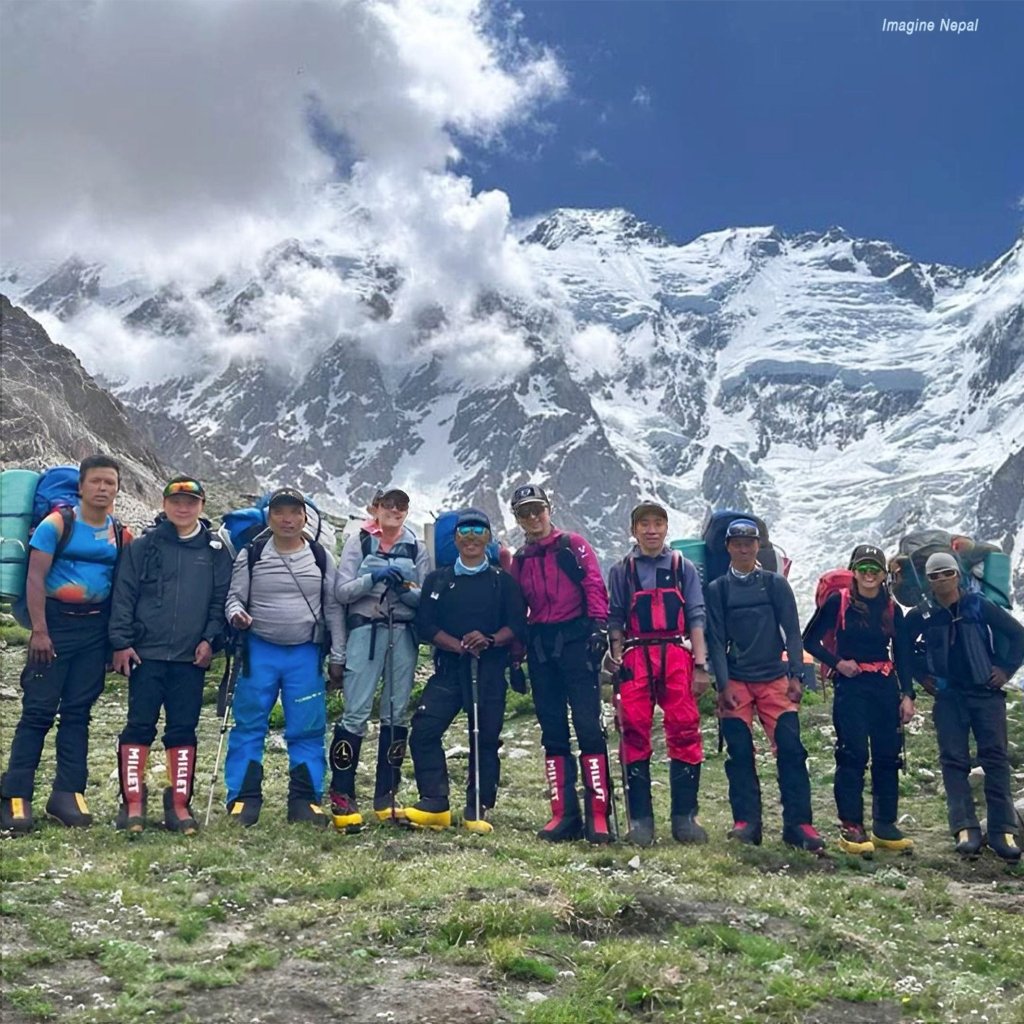
Imagine Nepal team
The team of Imagine Nepal who summitted the peak were: Dawa Sherpa, Dawa Gyalje Sherpa, Gao Lee, Tamting Sherpa, Tracee Metcalfe of US, Sashko Kedev (Skopje), Naoki Ishikawa of Japan, Ngma Nuru Sherpa, Nailia Kiani of Pakistan, and Ngim Doree Tamang of Nepal.
Dawa Gyialjee Sherpa got his 13x8000m, Tamting his 12×8000, and Dawa Yangzum his 10th successful summit. From Nanga Parbat they go to the Gasherbrum and Mingma G’s intention is that everyone complete the 14x8000m in September.
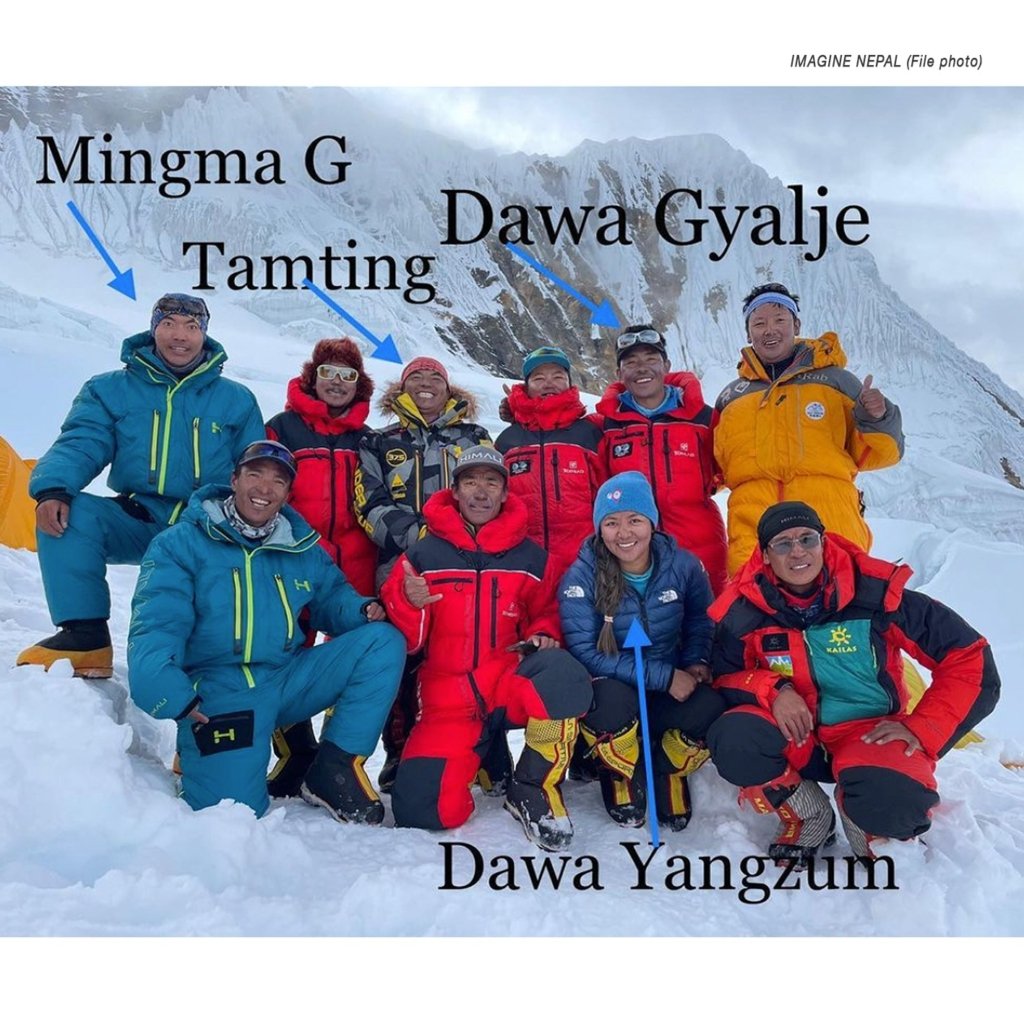
Summit Karakoram
The four-member Summit Karakoram expedition was comprised of Chris Warner of the US, Chhiring Sherpa, Pemba Tasi Sherpa, and Mingma Dorchi Sherpa,
Seven Summit Treks
The nine-member team of the Seven Summit Treks (SST) expedition was comprised of Josette Vallotton of Switzerland, Phurbu Kusang Sherpa, Taraman Tamang of Nepal, Flutura Inbrahimi, Phurba Thile Sherpa of Nepal, Hi Jing of China, Sona Sherpa, Afsaneh Hesami of Iran, and Anja Blacha of Germany.
Suzanne Al-Houby a Swiss climber of Palestinian origin, Naila Kiani, and Wajidullah Nagari reached the top at 1:30pm without oxygen supplement.
Suzanne was the first Arab woman to climb Mount Everest on May 21, 2011, and the seven summit. Previously, she was also the first Arab woman to climb Mont Blanc, Elbrus, Aconcagua, Vinson, Denali, Carstensz Pyramid, and many others.
On June 26, Shah Doulat, a young climber from Hunza District’s Shimshal Valley, and 24 climbers from SST and other expeditions summited the Nanga Parbat.
This year, there is no Camp 4, but a higher percentage of climbers are using supplementary oxygen to tackle a longer summit day. As on all “lower” 8,000ers, the widespread use of supplementary oxygen on 8,126m Nanga Parbat is quite recent, writes Angelina Benavides in Explorersweb.
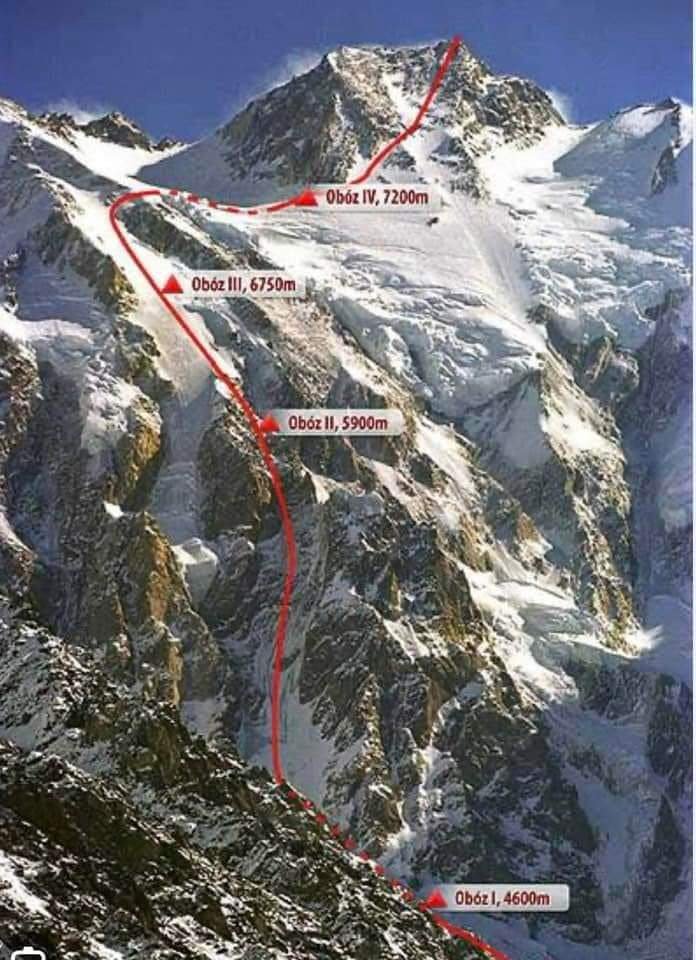
The ‘Killer Mountain’ history
Nanga Parbat is the ninth-highest mountain on earth and the westernmost major peak of the Himalayas, located southeast of the northernmost bend of the Indus River in the Pakistan-administered Gilgit-Baltistan region’s Diamer District.
First conquered by Hermann Buhl on July 3, 1953, Nanga Parbat is commonly known as “the Killer Mountain” due to its high fatality rate. The mountain has a daunting ascent, and even in the summer months, it is very difficult to climb due to unstable glaciers, avalanches, and ferocious storms.
At least 31 people died before the first ascent by the legendary Austrian alpinist Hermann Buhl on July 3, 1953, without the aid of oxygen. After the tragedy it was nicknamed “the Killer Mountain.” It has a 22.3% death ratio, making it the third most dangerous mountain peak in the world.
The climbing route of the first ascent is followed by a single narrow ridge to the summit. On the southern side, the 15,000 feet Rupal face is the largest mountain face in the world, which is a huge single wall of rock and ice.
After a year, another Italian legendary mountaineer Reinhold Messner became the first and only climber to reach the summit via the perilous Rupal flank.
This ascent nearly killed him. He lost his brother Gunther, seven toes, and several fingertips in this attempt.
In 1954, Lilliane Barrard became the first woman to successfully climb the mountain.
Known as “the western anchor of the Himalayas,” Nanga Parbat is the second most prominent peak in the Himalayas, after Mount Everest.
The first successful winter ascent was made on July 3, 2016, by Ali Sadpara, Simone Moro, and Alex Txikon.

The High Asia Herald is a member of High Asia Media Group — a window to High Asia and Central Asia


